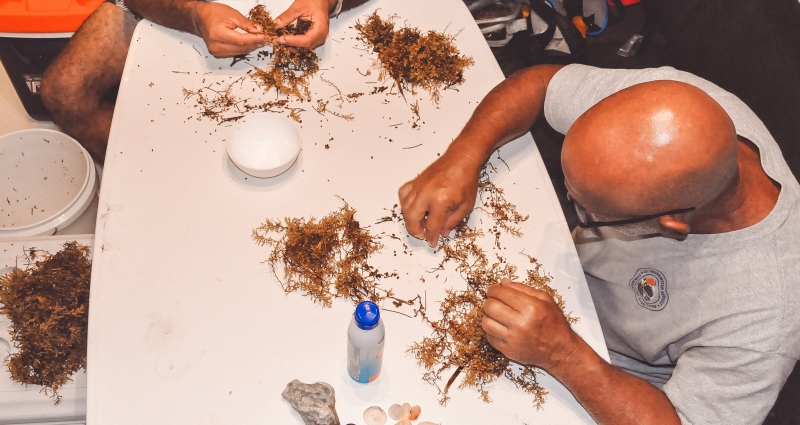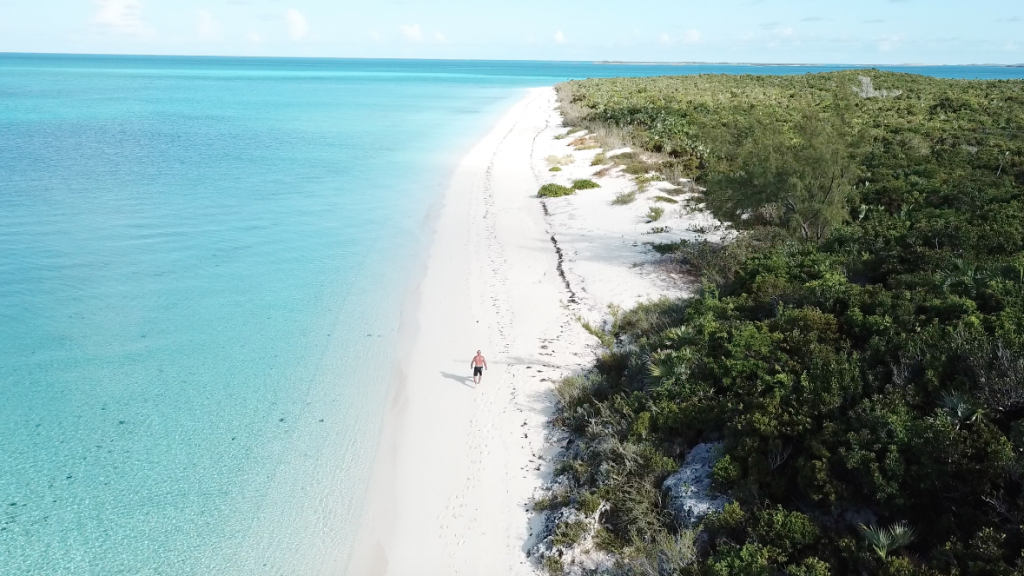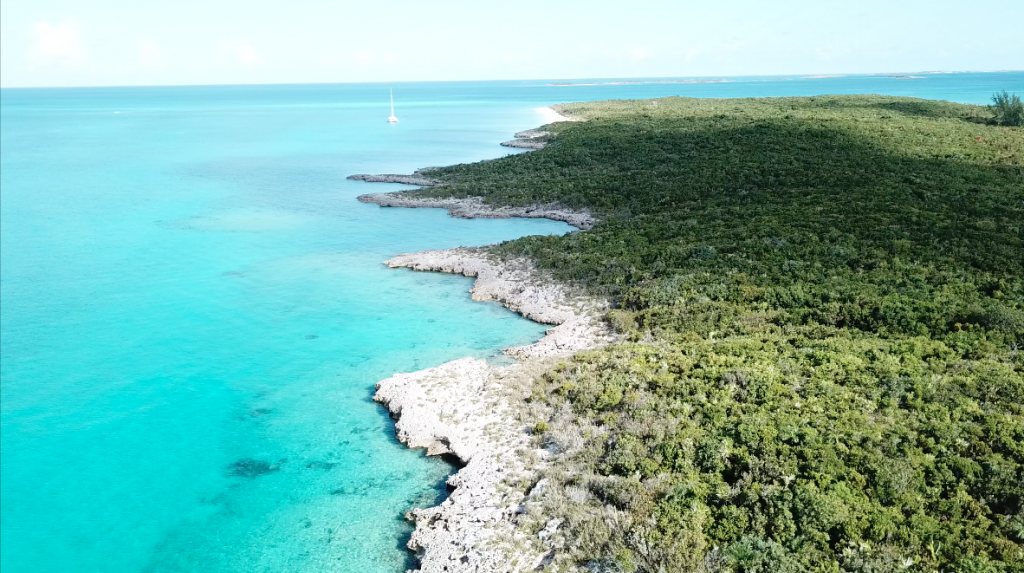We Believe In The Power Of Everyday People To Positively Impact The World
What Is Citizen Science Research?
Generally, citizen science is defined as the collection and analysis of data by members of the general public.
Our Contribution To Microplastic Research
Pounds Of Ocean Trash Collected:
lbs
Microplastic Trawl Samples:
units
Hours Of Beach Clean Up:
hours
Hours of microplastic research:
hours
Research With CetoSea
CetoSea is using citizen science research to reduce micro plastic pollution all around the world. Citizen science research is a core part of every CetoSea vacation. After years of operating sailing & diving vacations in the Caribbean, we realized that a wildly untapped resource of modern science is everyday people. As an exclusive guest with CetoSea, you’ll help contribute to the 5Gyres™ Global Estimate of Marine Plastic Pollution by helping collect, interpret, and record microplastic samples during your tour.
Using microplastic samples collected by citizen science research groups, like CetoSea, 5Gyres™ published a report in 2014 that caught international headlines. 5Gyres™ estimated that there were over “5.25 trillion particles of “plastic smog” surface pollution— weighing in at 269,000 tons —pollute our oceans worldwide.” To this day, citizen science research continues to inform policy makers around the world and help reduce plastic pollution.


Learn More About Our Research and Conservation Projects
For microplastic research, our Manta trawl device deploys for 30 mins and tows behind our yacht while underway. We carefully record numerous environmental factors, such as wind speed & direction, ocean current speed & direction, sea temperature, Start & Stop latitude and longitude, course heading, and observational data. After 30 minutes, we haul the trawl and net aboard and sort through the yield. Typically, our samples contain algae, seaweed, zooplankton, and so far every time – MICROPLASTICS.
With all hands on deck, we sort through the sample to isolate each tiny microfragment of plastic. Samples range from 1mm – 5mm, and you’ll use foreceps and a serial sieve to separate plastic from organic matter. After we’ve counted, sorted, and weighed the microplastic fragments, our samples get bundled up and kept for further analysis in California. We then extrapolate from our collected samples to calculate an estimated density of microplastic per square nautical mile.
For example, a random sample data set from the Sandy Point region of St. Kitts & Nevis yielded 12 microplastic fragments (<5mm) from our device which has a 1 meter wide mouth. Given our random method of 1 nautical mile transect line choice, we can then calculate that there are an estimated 22,224 microplastic fragments per square nautical mile – by multiplying our observed 12 fragments x 1852 meters/nautical mile.
All in all, the process is quick, simple, robust, and effective at measuring microplastic levels at sea. We’ve recorded data both offshore and coastal, and are interested in several hypotheses:
How do major weather events, such as hurricanes, impact microplastic levels in the Caribbean?
How are microplastics transported via high-current tradewind regions, such as the Caribbean, en route to the popular ‘gyres’ of accumulation in our oceans?
How do local factors such as tourism, waste management practices, population density, and coastal proximity impact micro & macroplastic levels?
Throughout our sampling, our findings have been humbling and concerning – ocean microplastic levels are extremely high in regions where accumulation of fragments shouldn’t happen (ie: high current flow tradewind zones), and the amount of plastic we observe offshore and coastally only keeps growing over time. Building a robust dataset for this region is the first step in identifying and highlighting a problem which must be addressed immediately, and it’s our aim to use the power of this information with our passion for conservation to show how everybody can make lifestyle changes for the benefit of their local and global communities.
Microplastic data summary:
Sample Counts:
St. Barth’s – 3 samples
St. Martin / Sint Maarten – 5 samples
St. Kitts & Nevis – 4 samples
Abacos, Bahamas – 3 samples
Exumas, Bahamas – 3 samples
TOTAL: 18
Calculated Sample Results (pieces per square nautical mile):
St. Barth’s – 7,445 plastic particles
St. Martin / Sint Maarten – 14,890 plastic particles
St. Kitts & Nevis – 29,780 plastic particles
Abacos, Bahamas – 299,663 plastic particles
Exumas, Bahamas – 11,168 plastic particles
Average Leeward Islands: 17,371 plastic particles
Average Bahamas: 155,415 plastic particles
A sad reality of modern times is that every beach in the world has plastic pollution. Whether macro or micro, there’s unfortunately plastic throughout the sand, mangroves, rocky coasts, and pristine waterways. Therefore, CetoSea has adopted the mission of cleaning the beautiful places we want to enjoy, and collect data on the amounts, type, and dispersal of plastic trash we collect. There’s power in numbers, and our groups of 6 – 8 usually make quick work of cleaning up a beach or coastal region, with inspiring effectiveness!
A half-hour of beach clean up produces an extraordinarily different scene after we’re done collecting, and we are infinitely proud of our guests for diving head first into helping keep these destinations pristine. Our clients routinely report back with examples of how their simple volunteering with CetoSea left them inspired to contribute to environmental causes and initiatives in their local communities back home – and that’s where the beauty of our impactful sailing vacations lies!
A long time ago we grew frustrated by using typical, cheap plastic garbage bags to collect more plastic waste from the shores – they are constantly punctured, tear & rip, and ultimately did not help with the problem. ‘Why are we buying more plastic to collect plastic?’ we balked. To address this issue, we started using repurposed burlap sacks donated from the local fruit & vegetable markets on island, which are exceptionally stronger and repurposed!
We collect beach trash in these sturdy sacks and bring it back to the yacht, where we’ve custom-designed a dedicated ocean trash storage locker in the bow for safely housing the waste we collect. Once we reach a port with suitable waste disposal facilities, our trash is offloaded in a responsible manner, often to the great thanks of local harbormasters, Port Authorities, Customs & Immigration officers, fishermen, and community members. Local officials are particularly thrilled to see the tourism sector playing a part in mitigating the coastal inundation of ocean trash – and we’re proud of the work we do too!
Some simple data on the pounds of trash we’ve collected with our groups thus far:
Pounds of Coastal Plastic Pollution Removed:
St. Barth’s – 610 lbs
St. Martin / Sint Maarten – 385 lbs
St. Kitts & Nevis – 584 lbs
Abacos, Bahamas – 521 lbs
Exumas, Bahamas – 312 lbs
TOTAL: 2,412 lbs
Coastal carbon, or blue carbon, is carbon dioxide (CO2) captured by marine organisms and ecosystems and stored in the forms of biomass and sediment. This storage of carbon is essential in reducing the greenhouse effect caused by CO2 in the atmosphere, and has a tremendous capacity for storing waste carbon. Atmospheric CO2 is sequestered by coastal ecosystems and accumulates in the sea floor as organisms live and die naturally. Given the lack of oxygen and bacterial processes available underwater, blue carbon does not readily break down and eventually becomes heavily compacted in marine sediment. The carbon-rich soil creates layers of helpfully collected carbon in coastal sediment which add up over thousands of years, storing thousands of metric tons of carbon per hectacre!
Destruction of these valuable resources for carbon storage has multiple effects, but chiefly the liberation of all this stored carbon coupled with the destroyed region’s inability to continue sequestering carbon leads to a two-fold catastrophe. As such, protection and enhancement of these carbon-storing coastal ecosystems is critical for the health of the oceans. CetoSea’s approach to helping in this field comes in several forms.
First, our coastal clean up efforts remove tangible pounds of trash from these ecosystems, encouraging healthy mangrove growth and support, unhampered by waste and pollution. It’s not rocket science that trash inhibits the growth of marine species, so we carefully comb through mangrove creeks by SUP and dinghy to clear trash and debris from the growing zones.
Next, using our onboard DJI Mavic Pro drone and blue carbon mapping initiatives, CetoSea is undertaking a new project to help identify and highlight the abilities of coastal regions to sequester (store) carbon in the living and biomass sedimentation of mangroves, salt marshes, and sea grasses. Our drone captures high-quality aerial images of islands and coastal regions, which can then be mapped to estimate effective carbon storage capacity of a region. These data will help drive decisions about the social and economic values which will hopefully lead to mitigating the destruction of these critical ecosystems, and thus the release of additional carbon into the atmosphere.
Finally, as ocean advocates, our volunteers onboard can assist in planting additional mangroves through local collaborations with partners and affiliate organizations. Mangrove planting encourages not only carbon sequestration, but diversification of marine organisms, and healthy development of juvenile marine species. It’s common to see schools of thousands of baby fish among the mangroves, and juvenile sharks, rays, and turtles too! Think of mangroves as a nursery for marine life – and we want to protect these nurseries!
The coral reef bleaching problem is a modern epidemic thought to be brought on by a number of factors caused from human consequence. Over the years of traveling, sailing, diving, and exploring the beautiful tropic waters of the Caribbean, CetoSea has witnessed firsthand the ongoing bleaching at major reefs. Our new projects in researching coral bleaching & diversity include several initiatives geared toward citizen-scientists who join on our trips with a focus on SCUBA and coral identification.
We will be compiling a photographic, quantitative, and qualitative database of coral reef health from each of our dives completed during CetoSea trips. SCUBA divers will learn about coral types & taxonomy, and how to identify bleaching and algal growth on the reef. Several locations of interest will be identified throughout our sailing & diving region to photograph and measure the rates of bleaching on the reef. In addition, divers will help participate in coral diversity measurements using a standardized random grid system to identify and quantify the variety of coral types observed.
This data will grow throughout our many years of operating in the regions, and hopefully drive conversations at the local and government level about protecting coral reef and establishing Marine Protected Areas. A critical factor of this citizen science research will be repetition and reproducibility of reef identity verification and evaluation. We will strive to utilize as similar practices as possible throughout our research dives, and compile viable, statistically significant observational data for future publication.
In addition to identifying the variety of coral species in a reef ecosystem, CetoSea citizen science guests will also have the opportunity to partake in additional marine organism diversity research. Utilizing a similar standardized grid approach and time-based function, SCUBA divers will record the numerous varieties of marine organisms within specific families inside their observational grid.
We hope that over many months and years of uniform data collection, CetoSea can help identify the prevalence and distribution of marine organisms locally in the Caribbean and evaluate their diversification over time. It is only possible with the help of our citizen science SCUBA guests that this research is made possible, and we will concomitantly strive to educate more clients to earn their PADI Open Water and/or Advanced certification and inspire a growing interest in citizen science and scientific + ecological literacy among participants in our vacations.
We also recognize the massive detrimental effect of invasive species in the Atlantic Ocean and Caribbean, including the hugely proliferant lionfish. These fish are native to the Pacific Ocean, where they have several natural predators, but were thought to have been accidentally introduced into the Atlantic Ocean & Caribbean Sea by an aquarium release a few years ago. It’s unsure how exactly the invasive lionfish got here, but what’s 100% certain is that they wreak absolute HAVOC on our marine ecosystems. Lionfish are highly-adapted hunters, with their ornate dorsal, pectoral, anal fins, and tail resembling innocent seagrass or coral to unsuspecting reef dwellers. Instead, without any natural predators, the lionfish continues to exponentially grow in population size all while killing very disproportionate numbers of fragile reef fish. It’s not uncommon to find entire coral heads populated now only by schools of lionfish from the Florida Keys to Trinidad & Tobago.
CetoSea takes a stance against invasive species by contributing to lionfish population culling and aiding in the biodiversity of coral reef ecosystems. By removing these nasty predators from the reef using spears, nets, and traps, we’re dedicated to raising awareness about this growing problem and promoting solutions to local communities which are largely impacted by a decrease in marine biodiversity. It helps that lionfish meat is a buttery-soft, tasty, white delicacy, which has lead to increased demand among seafood serving restaurants.
*More details coming soon, including details on the tools and instrumentation we’ll be acquiring to establish a robust mobile shipboard laboratory for analysis of ocean temperature, salinity, alkalinity, aqueous CO2, and dissolved O2 levels from various regions and depths while we sail!*
The opportunity to learn techniques of ocean research and contribute to a valuable accumulation of knowledge of the sea is what sets CetoSea’s mission of sustainable ocean adventures apart from our competitors. At every level, we are committed to providing the tools for inspiring the next generation of ocean advocates through our immersive and hands-on citizen science research experiences. Our guests are routinely inspired by the level of commitment to sustainability and conservation on their CetoSea trip, and go home with an inspirational amount of energy to become positive influencers for the environment in their local communities.
Start Planning Your Next Adventure
Get in touch with our Travel Experts for assistance booking your Caribbean tour. We can answer any questions you have and help create the tour of your dreams.




